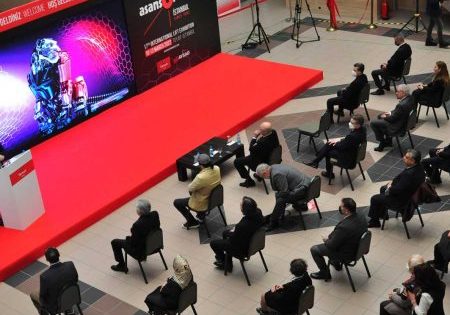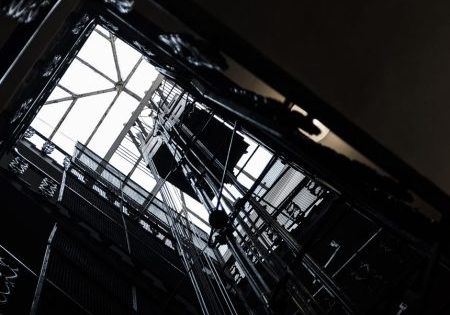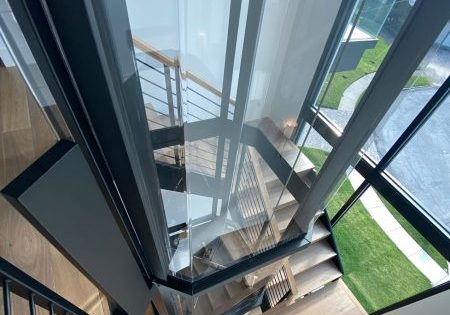Monumental Modernization
Feb 28, 2022
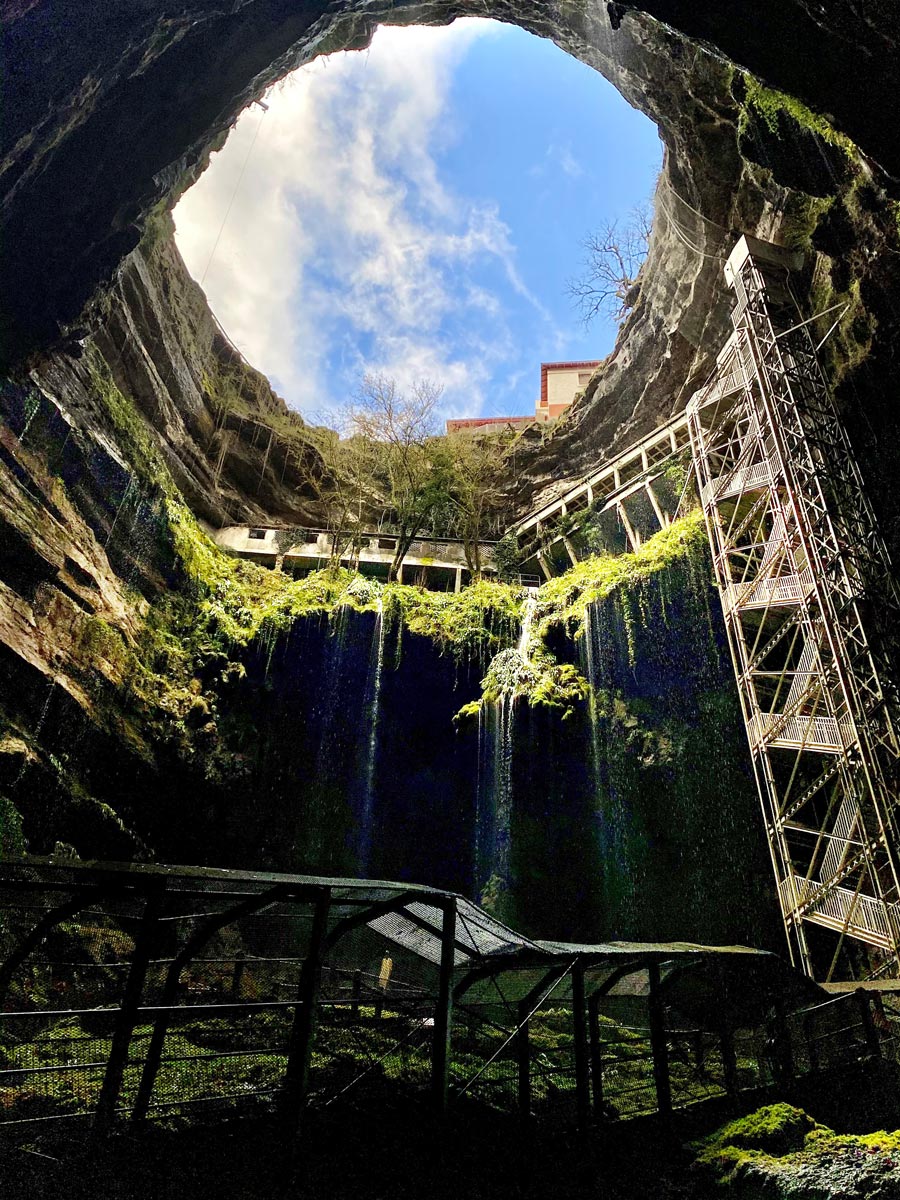
Otis France innovates and overcomes challenges to restore an elevator providing access to one of the world’s natural wonders.
Work to modernize the most exposed and difficult-to-access elevator at France’s Le Gouffre de Padirac, one of the world’s natural wonders, took place on a monumental scale on a monumental site. Otis teams developed a tailored modernization procedure following a 2019 study, delivering the project in February 2021.
A Deep History
Discovered more than 130 years ago, Le Gouffre de Padirac features a gaping entrance to an underground stream with galleries and cavities more than 100 m below the surface. Half a million tourists visit the site each year. “It feels like the bottom of a telescope aiming at a piece of blue sky,” observed Edouard-Alfred Martel, a French lawyer later recognized as a visionary explorer, speleologist (a person who explores and studies caves), geologist and archaeologist when he first ventured into Le Gouffre de Padirac in 1889. It officially opened to the public on April 10, 1899, and remains virtually unchanged to this day. It’s open every day from late May to mid-November, with more than 24 million visitors having descended into the cavern since its discovery.
The kilometer-long underground tour begins on a boat on Rainy Lake and continues on foot, allowing visitors to successively discover the Grande Pendeloque, a stalactite over 60 m long, the Gours Lake, with its succession of natural dams, and the Grand Dome Room, located some 94 m under the ceiling.
Le Gouffre de Padirac is the first underground natural heritage site in France. The opening of the natural cavity is striking at 35 m in diameter and 75 m in depth. Some 42 km of underground galleries have been explored by speleologists, with many portions of the network still unexplored or surveyed. Le Gouffre de Padirac is located near Rocamadour in the Dordogne Valley on the Causse du Quercy in the Lot, 1 h from Sarlat. It lies at the heart of the Causses du Quercy, an immense limestone plateau.
Elevators Play Vital Role
The floor of this natural treasure can be accessed by a staircase. But be forewarned — it’s 543 steps from top to bottom (and an even more strenuous 543 steps from bottom to top). Since 1930, the majority of visitors exploring the site have done so using elevators. To ensure years of public access and to better accommodate the ever-growing crowds, Otis was selected to modernize the lowest elevator, which operates in the harshest environmental conditions, as well as provide maintenance for the other three elevators that transport visitors down the shaft. The modernization, which included the installation of a new 1.3-mT traction elevator machine, took place during the 2020-21 winter season in rainy, snowy conditions.
An Intricate, Robust Elevator System
Descending into Le Gouffre de Padirac feels like traveling back to Jurassic times, with water cascading down limestone rock walls covered with green vegetation. In winter, icicles hang from the rock, dripping to the chasm floor, some 75 m below. The layer of limestone is approximately 100 m tall. The depth of the cavern and the infiltration of water, which cools the rock and air in the cavity, keeps Le Gouffre de Padirac at a constant temperature of 13˚ C (55˚ F) at the bottom. But that consistent temperature comes with a tradeoff: Elevators have to operate in exposed conditions that include rain, snow, wind, frost and 98% humidity.
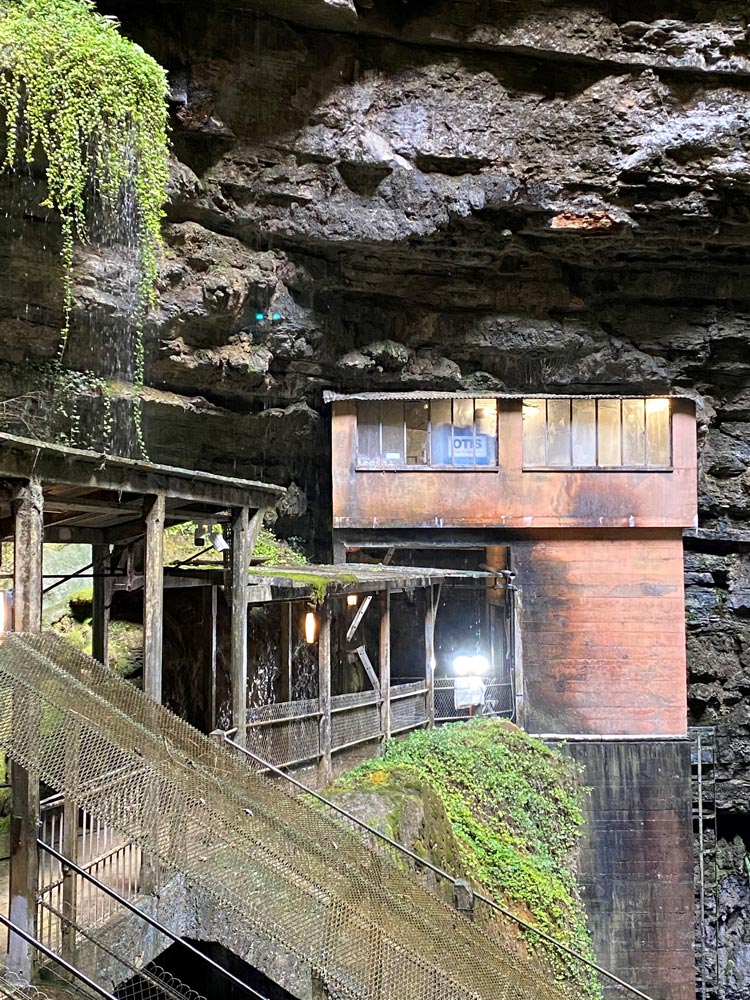
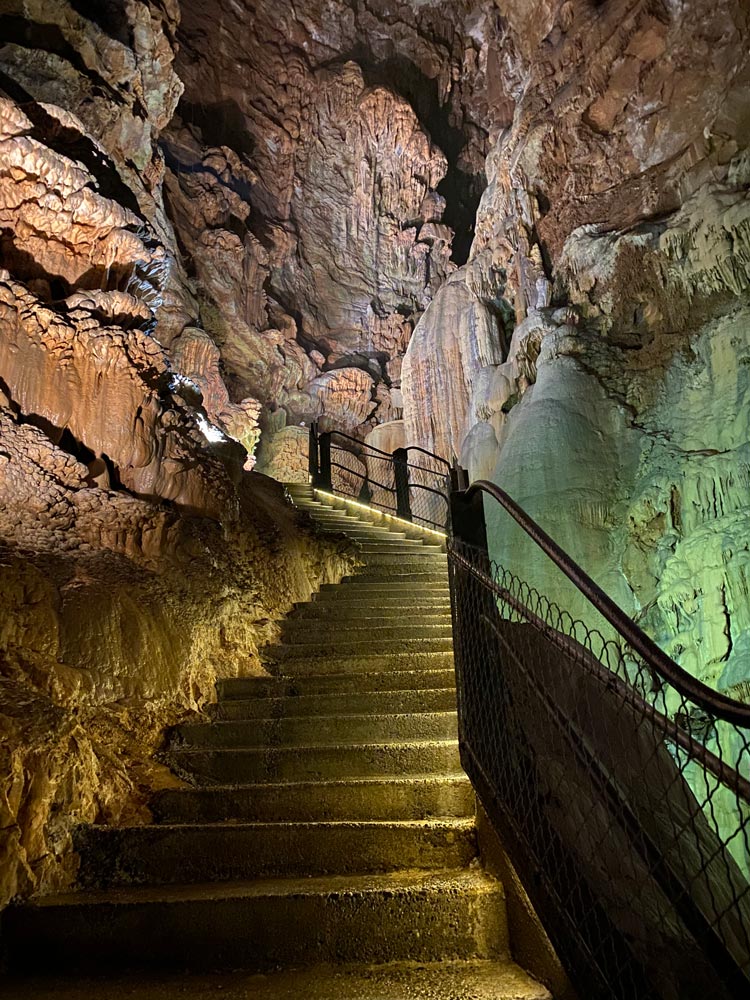
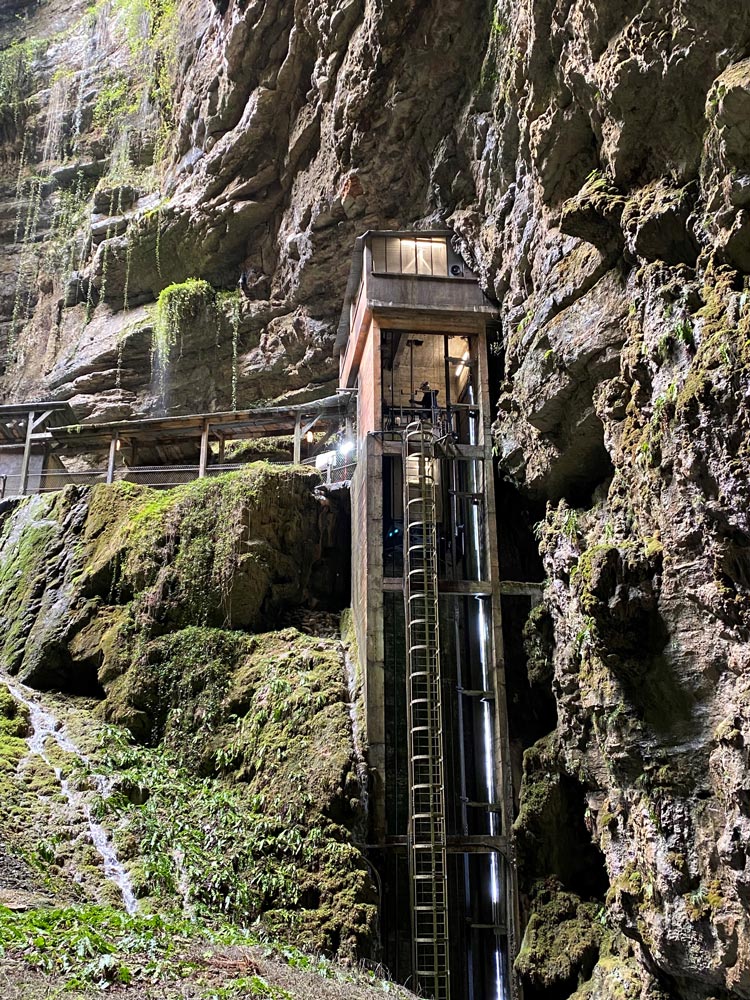
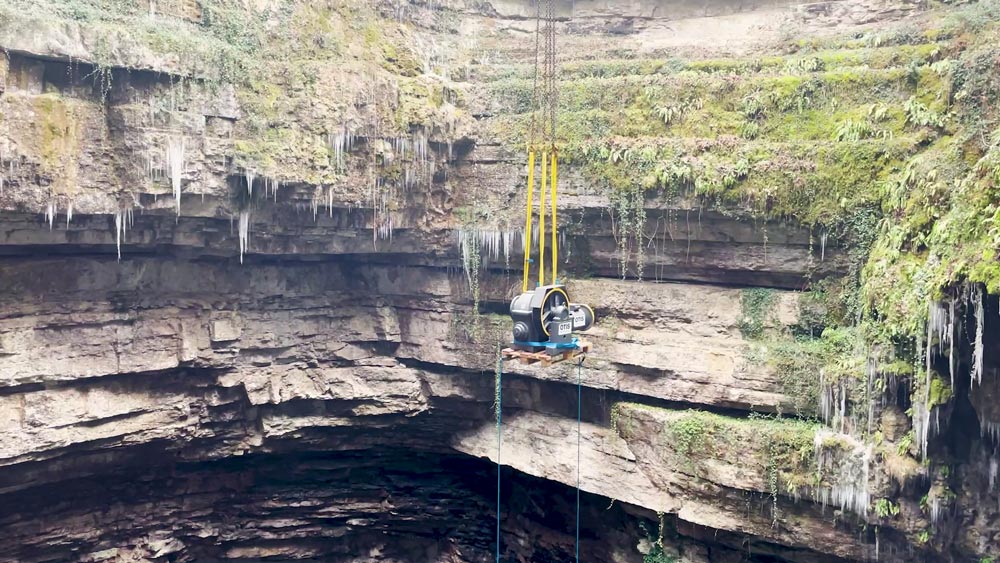
Due to the geologic conditions of the site, and to respect the rocky environment, a direct elevator from the lobby to the lower floor isn’t possible. The journey from top to bottom requires three different elevators — one running from the lobby to the intermediary floor, the second from the intermediary floor to a lower floor and, finally, a last elevator that takes visitors to the very bottom of the chasm. There are two elevators in the intermediary section (running parallel) — one dedicated to visitor traffic and the other for the site’s tour guides.
In 2020, Otis took over maintenance of the four elevators on site, and was awarded the contract to modernize the lower elevator, which was first installed in the 1980s. The elevator modernized by Otis, the last and lowest one, also is the most difficult to access and the most exposed to conditions. When it rains, water runs along the hoistway walls. The new elevator motor, galvanized cables, controller, custom electric wiring and other equipment had to be watertight to prevent damage over time.
To avoid disrupting the busy tourist season, work was conducted in the dead of winter. Otis technicians and operators from crane provider Bovis Company worked in snowy conditions lowering the 1.3-mT elevator machine into place and installing other equipment that could stand up to the harsh environment. Finalized in February 2021 by teams from Otis France’s Toulouse branch, the modernization made the elevator more reliable and guaranteed proper operation for the site’s reopening in the spring.
After being shipped from Otis’ Gien factory, the heavy traction machine was maneuvered along the immense vertical wall of the chasm to a depth of 50 m. The operation was carried out under heavy snow and rain, with Le Gouffre de Padirac’s limestone walls frozen with hanging ice. Transporting other elevator machinery to and from the bottom of the chasm was also a major challenge, since it was done manually.
After being shipped from Otis’ Gien factory, the heavy traction machine was maneuvered along the immense vertical wall of the chasm to a depth of 50 m.
Work was coordinated by Otis Modernization and Repair Field Supervisor Grégory Garnier, Modernization Mechanic Leader Gilles Bertrand, and Modernization Mechanic François Juve, all from the Toulouse Branch. “Our field preparations, coupled with coordination of the teams on the jobsite, were the keys to our success,” Garnier said.
Among the critical tasks completed were:
- Bringing the installation into regulatory conformity
- Adding galvanized cables capable of standing up to extreme weather conditions
- Installing stainless-steel elevator cab doors to avoid corrosion
- Changing out the motor
Installing a sensor system to detect flooding at the bottom of the hoistway to prevent the elevator from moving downward and allowing the cab to be brought up to the highest level, if necessary
Otis and its maintenance team from the town of Cahors now provide customized ongoing service support of all on-site elevators. The units receive regular upkeep throughout the year by trained Otis service employees and undergo an annual, two-week, in-depth maintenance assessment before each reopening in May. The Otis maintenance team maintains a stock of spare parts on-site to speed repairs.
Otis’ solution to modernize and service Le Gouffre de Padirac’s elevators joins a long list of challenging and creative outdoor installations that Otis has tackled, including the Eiffel Tower and the Christ the Redeemer Statue in Rio de Janeiro, Brazil.
François Lepretre, senior service manager, Otis France Southwest Region, said:
“For Otis and for our Southwest France region, it gives us real pride and joy to work at Le Gouffre de Padirac and to be part of the renovation project of such a unique elevator. For us, it’s about demonstrating our expertise and ability to work in a remote and isolated environment. Our local teams were unfailing in their commitment to delivering for our customer throughout the duration of the work. For eight weeks, they worked every day through intense cold and frequent precipitation. This was clearly a challenging project in an extreme environment, and they performed admirably.”
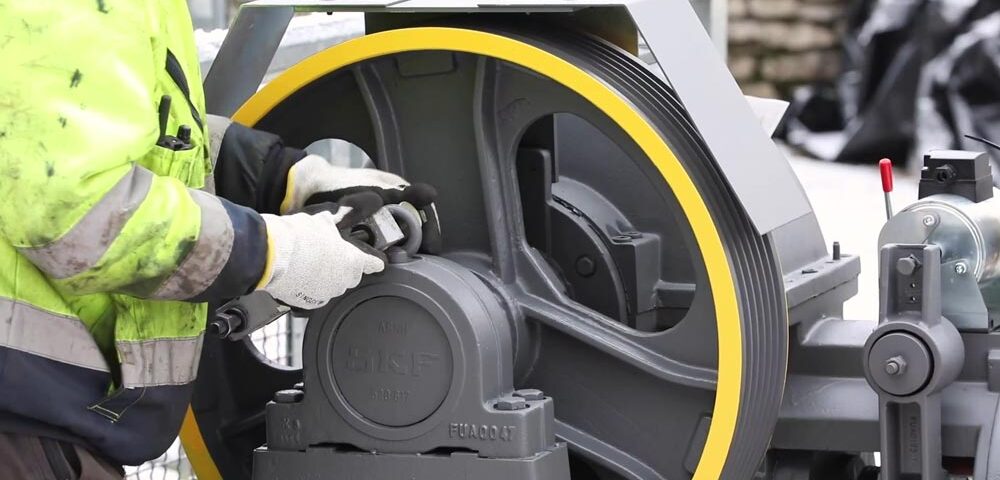
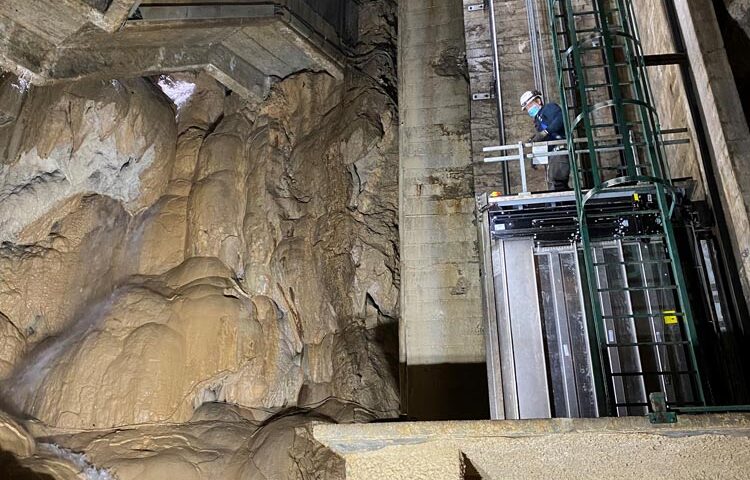
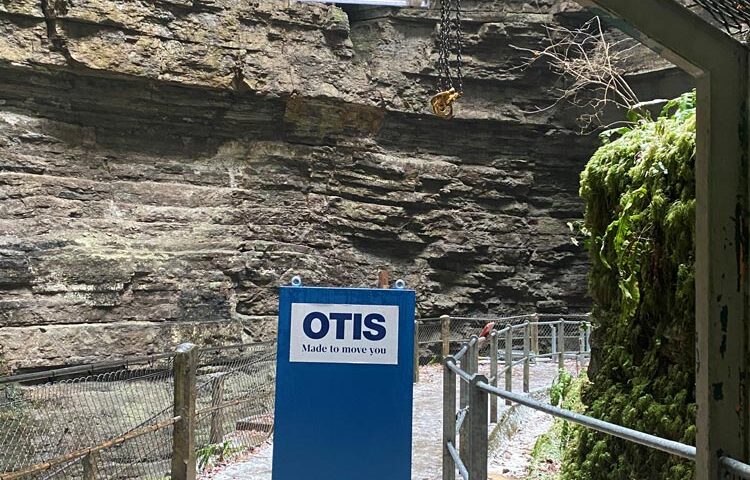
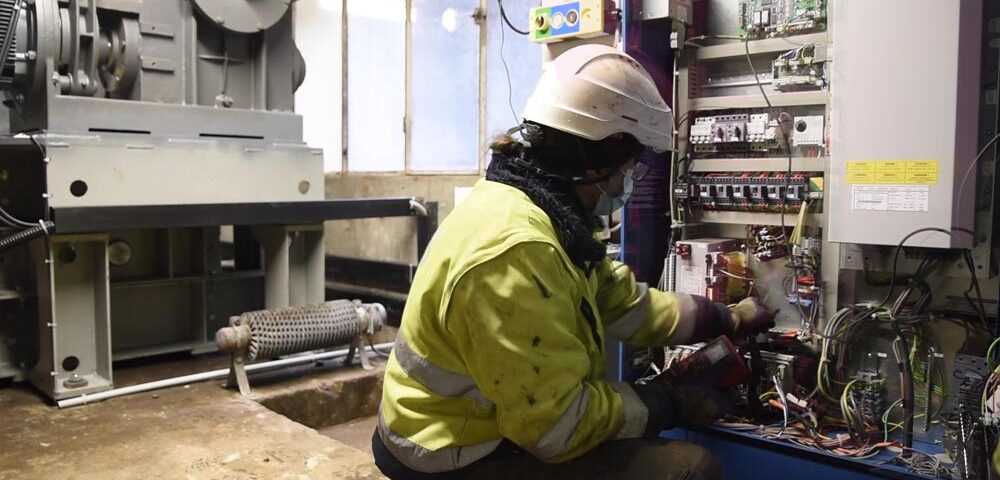
Get more of Elevator World. Sign up for our free e-newsletter.



